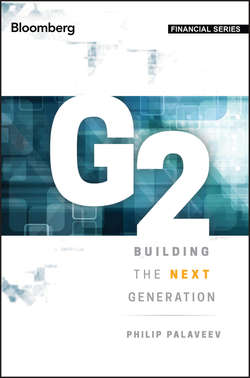Читать книгу G2: Building the Next Generation - Palaveev Philip - Страница 7
На сайте Литреса книга снята с продажи.
CHAPTER 1
Who Are G2s?
ОглавлениеThere were about 30 people in the room. They were gathered for a study‐group meeting and half of them were founders who years ago had started some of the largest and most successful advisory firms in the country. The other half were younger. They had joined the firms in the last 10 years as employees and had over time risen to become owners and leaders in their respective organizations. This collection of firms was called the younger group G2, short for second generation, to signify that they were not founders but rather the next generation.
A founder by the name of Richie Lee stood up. He spoke slowly and his words were rather poetic. “If a business is like a painting,” Richee said, “I want my business to be a beautiful painting that people can see even after I am gone. I want it to be a painting that lasts and endures.”
Becky Krieger, one of the G2 participants, got up to respond and what she said, to this day, best illustrates for me the dynamic between the generations of leaders inside advisory firms. “Richee,” she said, “You have to remember we are artists, too. We are not here just to preserve your painting. We are here because we want to create our own works as well. We want to add to your painting and we want to paint our own!”
Rebecca represents the G2s whom this book is about. They are talented, ambitious, and driven. They are experienced and accomplished in their profession. They are young but not youngsters; they have one or two decades of achievements behind them. They are looking to continue the work of the founders and eager to build and create their own. They are the future of the advisory industry and they are ready to take over.
G2 has already begun to take over, in fact. Many G2 members are owners (partners) in their respective firms. Some are COOs and CIOs. G2 professionals are managing client relationships, leading teams of people, and striving to be leaders.
Every firm needs a G2 if it is to have a chance of lasting beyond the involvement of the founders. Firms that lack a G2 or those where G2 is underdeveloped will likely dissipate or be merged and sold into bigger entities over the next 10 years. Firms that have developed their next generation, in contrast, will be magnets for other practices who want to merge with them. They will not run out of energy or people as the founders approach retirement.
G2 may be the future of the advisory industry, but it cannot take over yet – not without some help from firms and the industry at large. Having spent most of my early professional career as G2, I can easily relate to the challenges facing the next generation. Some are challenges that G2 members created themselves, and others are deficiencies in the environment where they grew their careers. Now that I am founder of my own firm and working with G2 partners, I can also relate to the feelings of the founders. It is difficult to trust a generation that is so eager but still unproven.
I have written this book as a bridge between founders and G2 because, ultimately, the truth is this: G2 is the future of the industry, and successful firms need to hire and embrace these younger professionals. Firms that fail to do so will have short remaining lifespans. To flourish, G2 members need to learn not only how to be good professionals (i.e., how to attract and service clients) but also how to be good owners, managers, and leaders of their firms. They need to learn how to make good decisions, put the best interests of the business first, and inspire others. Good firms will find a way to cultivate their management skills, educate them about being owners, and give them the opportunity to become leaders.
I hope you will follow me in this exploration of why G2s are the future of the advisory industry.
